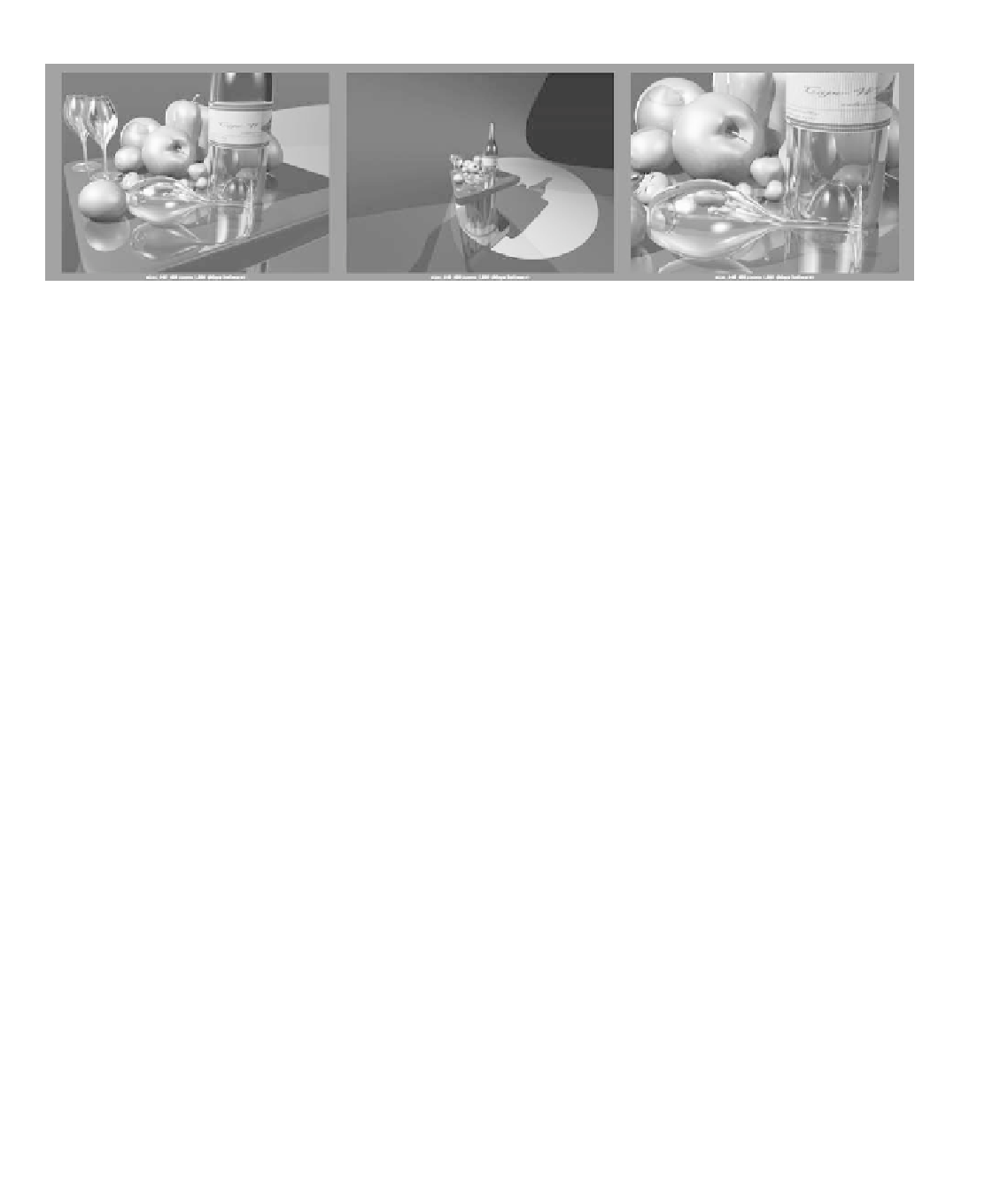Graphics Programs Reference
In-Depth Information
Focal Length = 35
Focal Length = 8
Focal Length = 60
Figure 11.18
Different focal
lengths
Although adjusting the Focal Length attribute of a camera zooms in and out, it isn't
the same as moving the camera closer to your subject using the Alt+right-click procedure
to zoom in view panels. Focal-length zooming can create optical distortions, such as can
be created with a fish-eye lens.
When you want to animate your camera getting closer to the subject of your shot, it's
best to animate the camera and not the focal length. However, if you need to match some
CG element in Maya to a photograph or video you've imported as an image plane, set
your camera's focal length to match that of the real camera used for the background.
Clipping Planes
All cameras in Maya have clipping planes that restrict the amount of information that
can be seen through them. The clipping plane is defined by the Near Clip Plane and Far
Clip Plane attributes. These set the minimum and maximum distance, respectively, of
the clipping plane. Any object or portion of an object that passes beyond these distances
won't show in the window and should not render.
If you notice objects disappearing as you move your camera and create a scene, it may
be because of the clipping plane. Increase the Far Clip Plane attribute, and the objects
should reappear in the view.
Film Back
The Film Back attributes concern the type of output you'll be dealing with after your
renders are finished and you're ready to put your animation on tape, DVD, film, or what
have you:
Film Gate
Defines the aspect ratio of your camera's view. Most images that are output to
television have an aspect ratio of 1:1.33, exemplified by the 35mm TV Projection selection
in the Film Gate drop-down list box, which is preferred for broadcast video. (For more on
aspect ratios, see Chapter 1.)
Fit Resolution Gate
Allows you to align footage you may have imported as an image plane
to match up CG properly to live action.
















